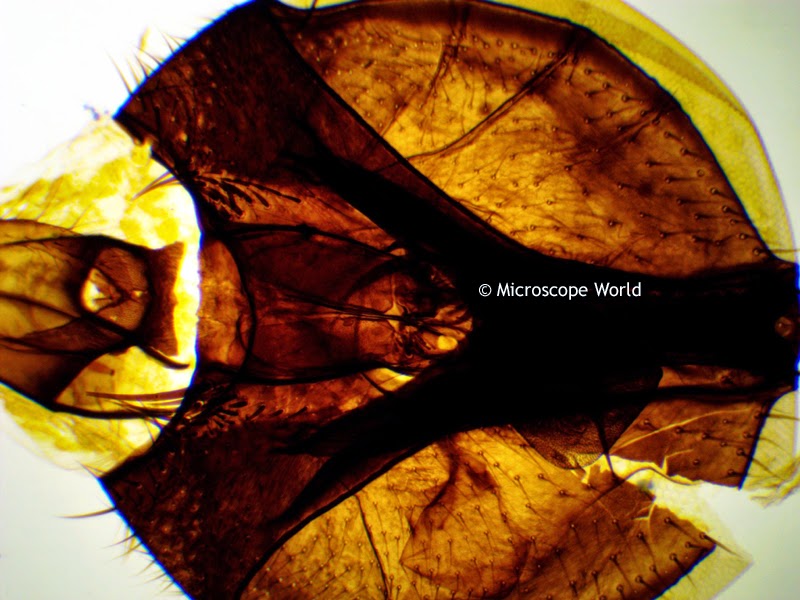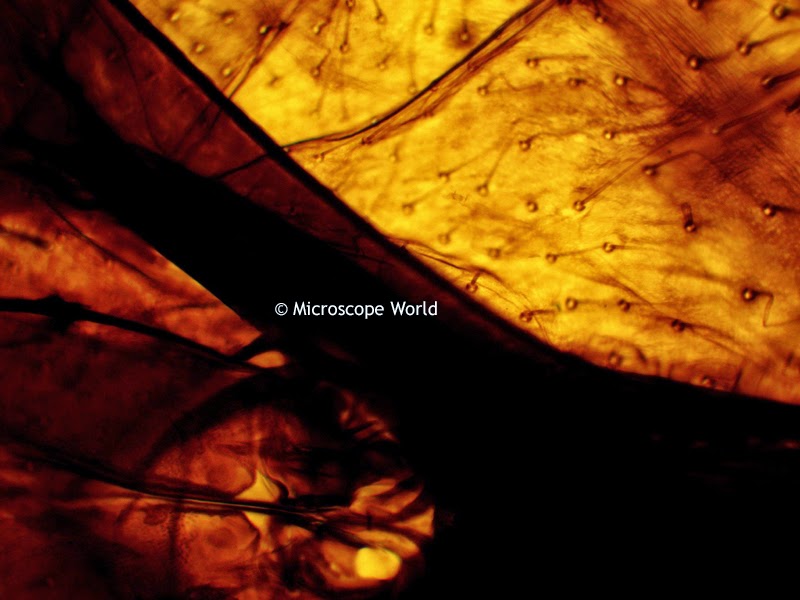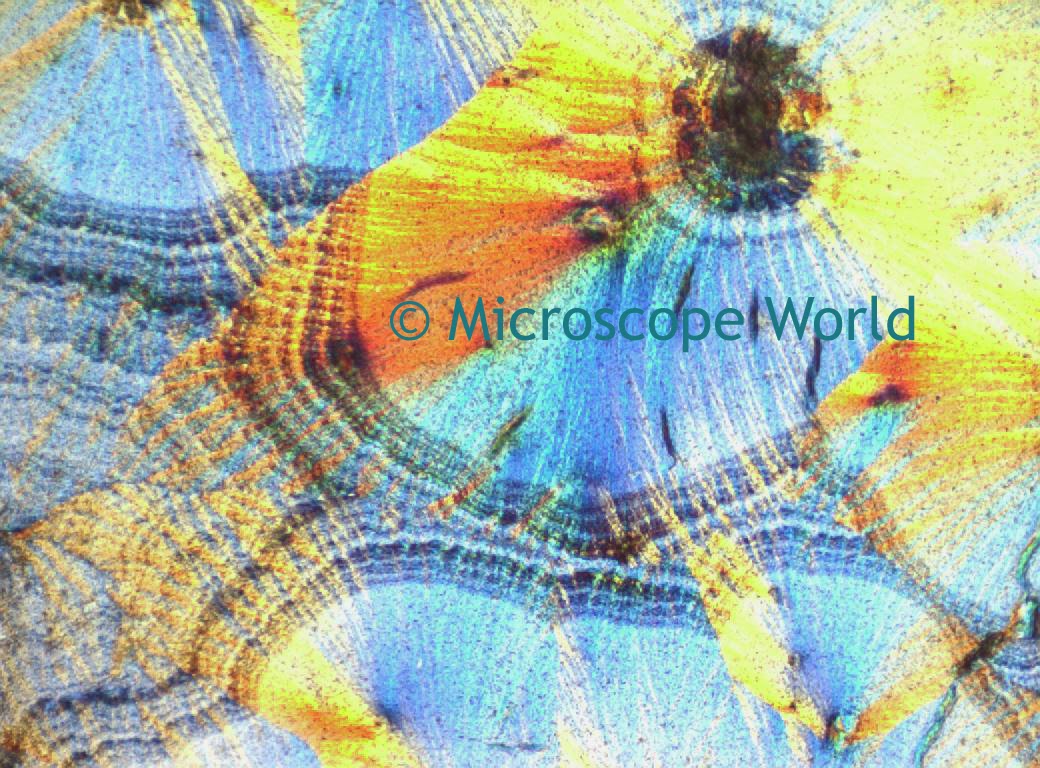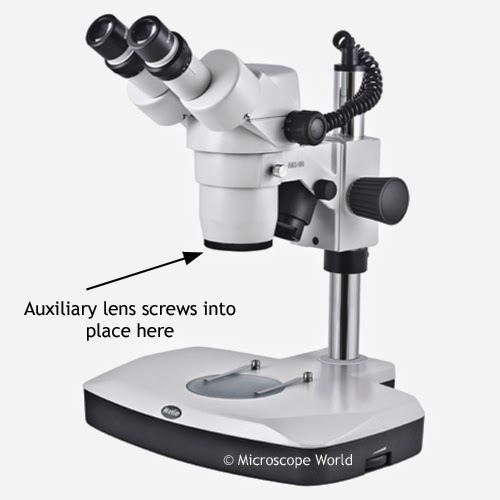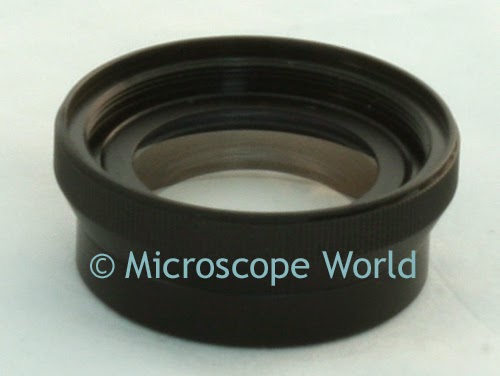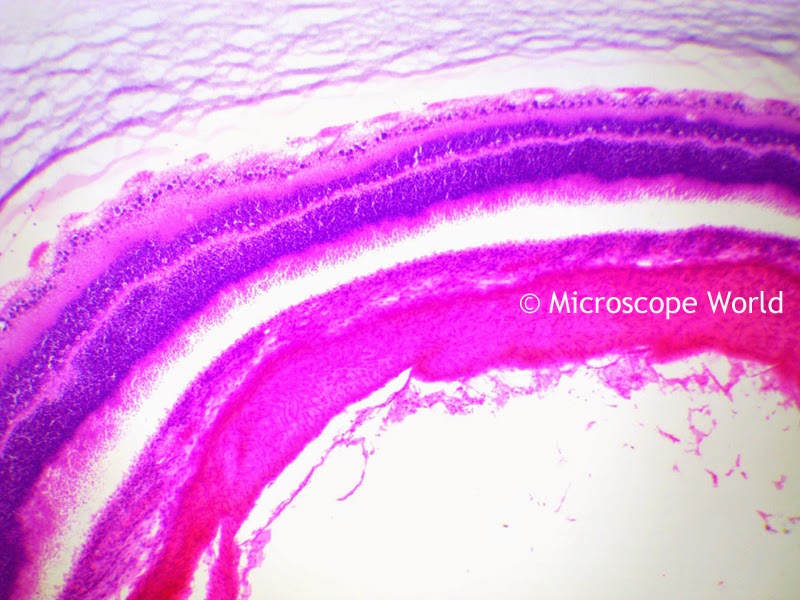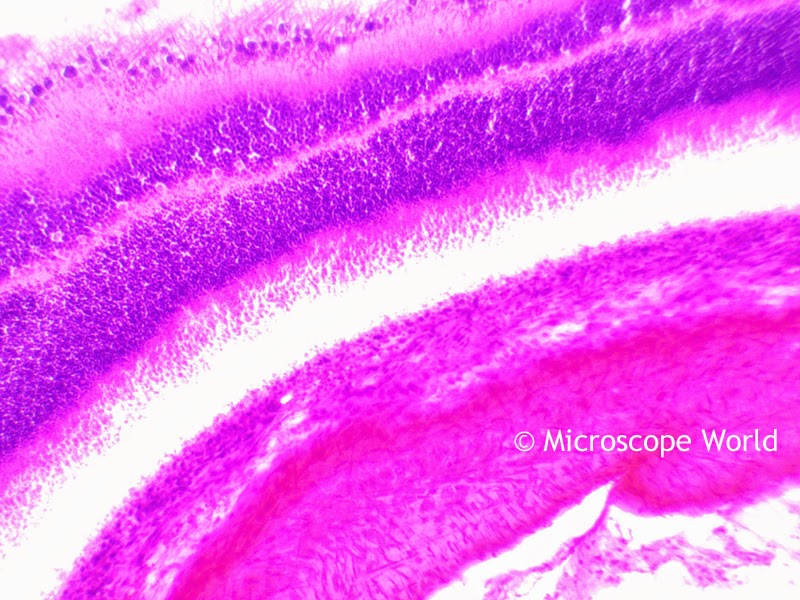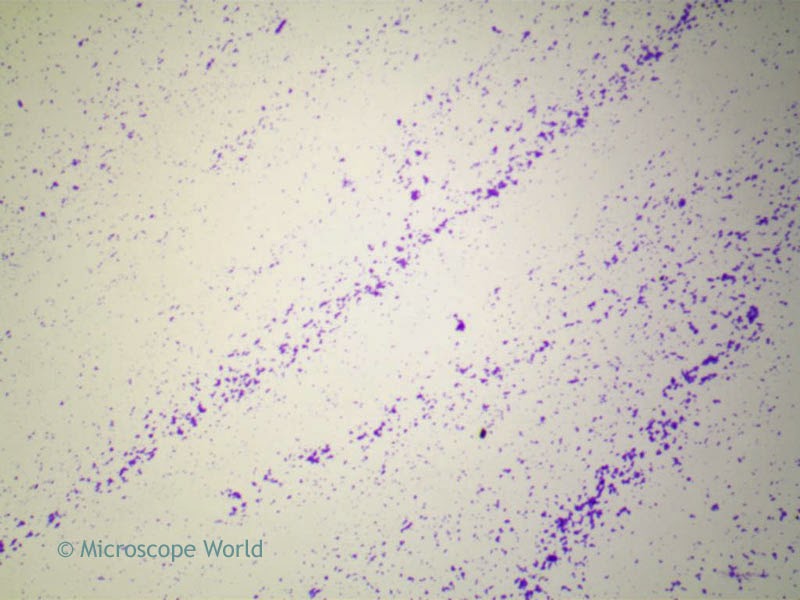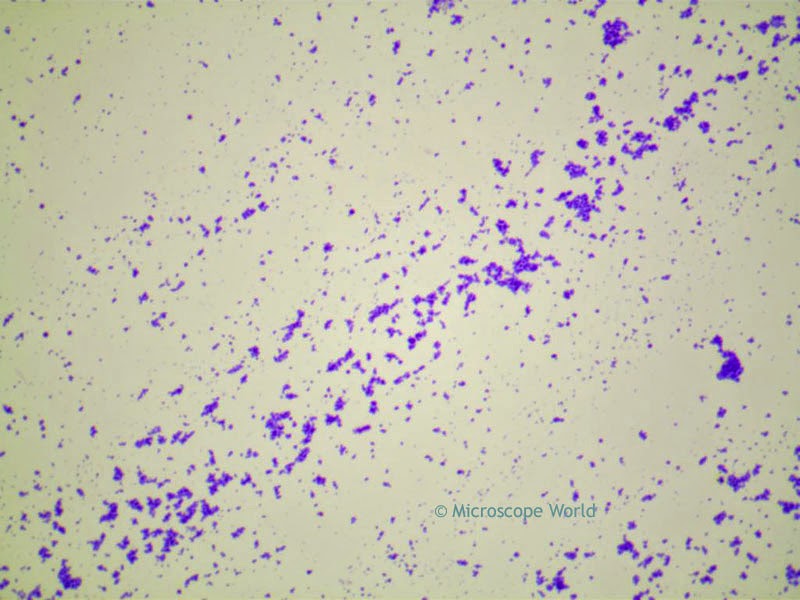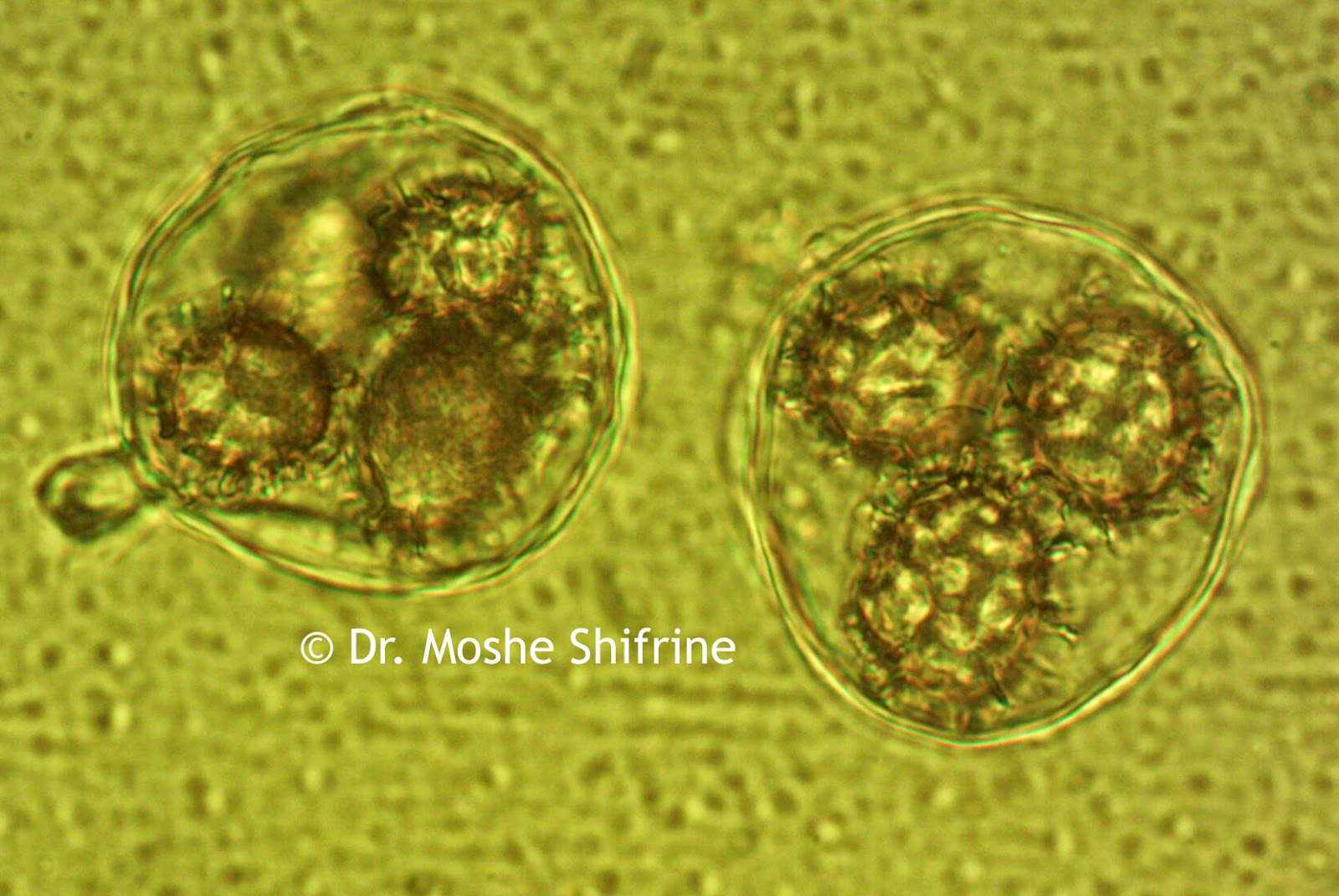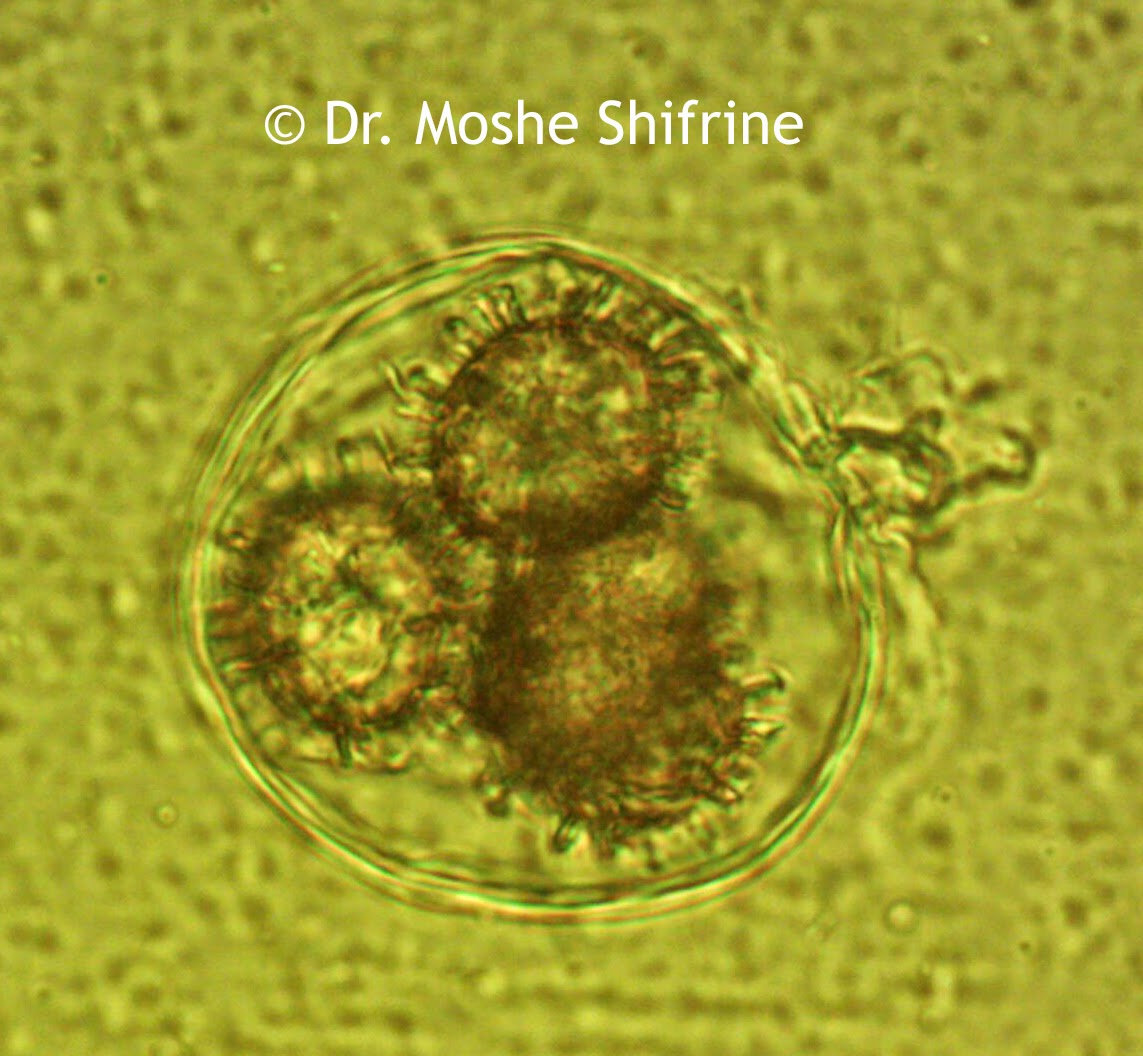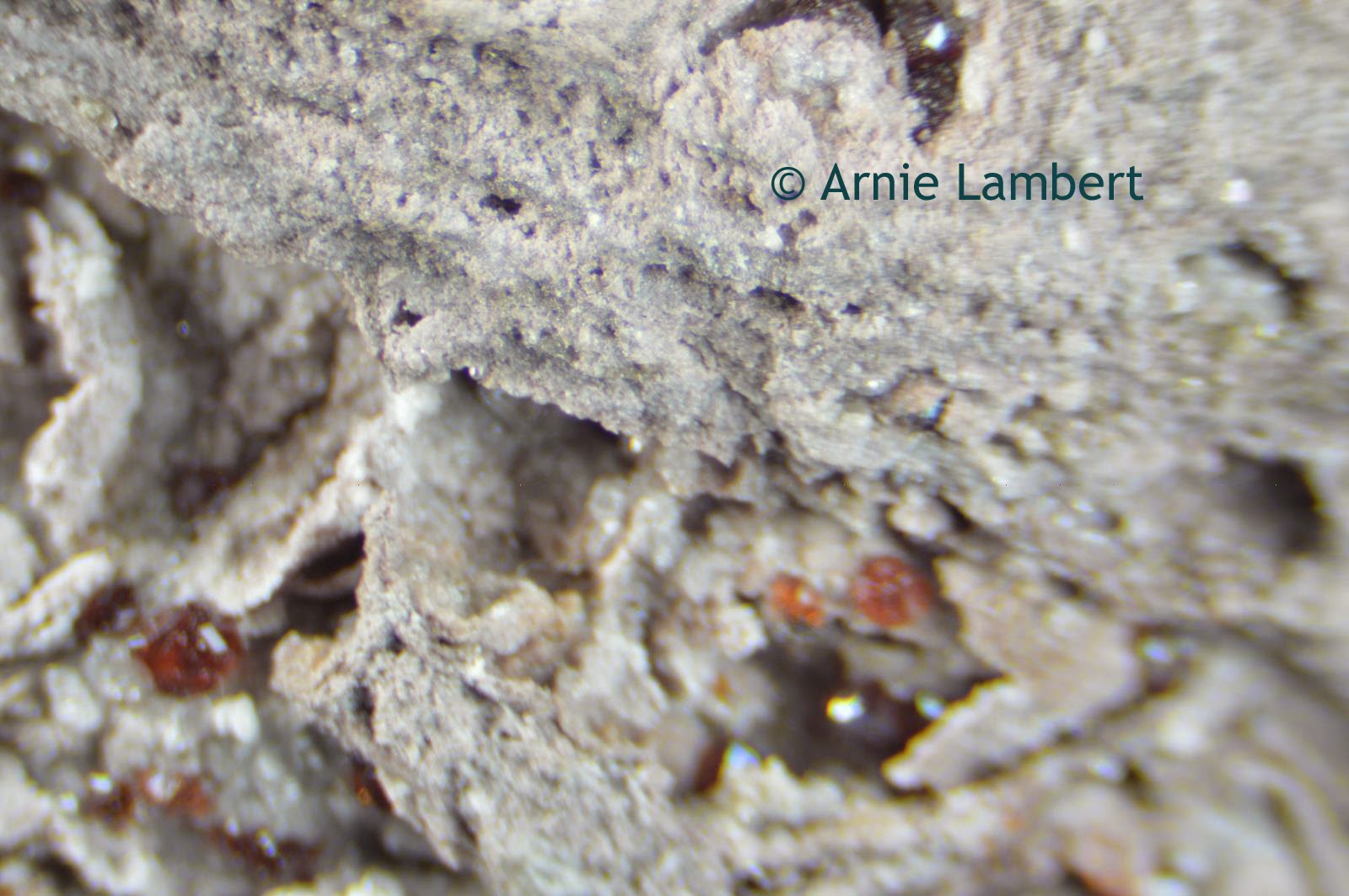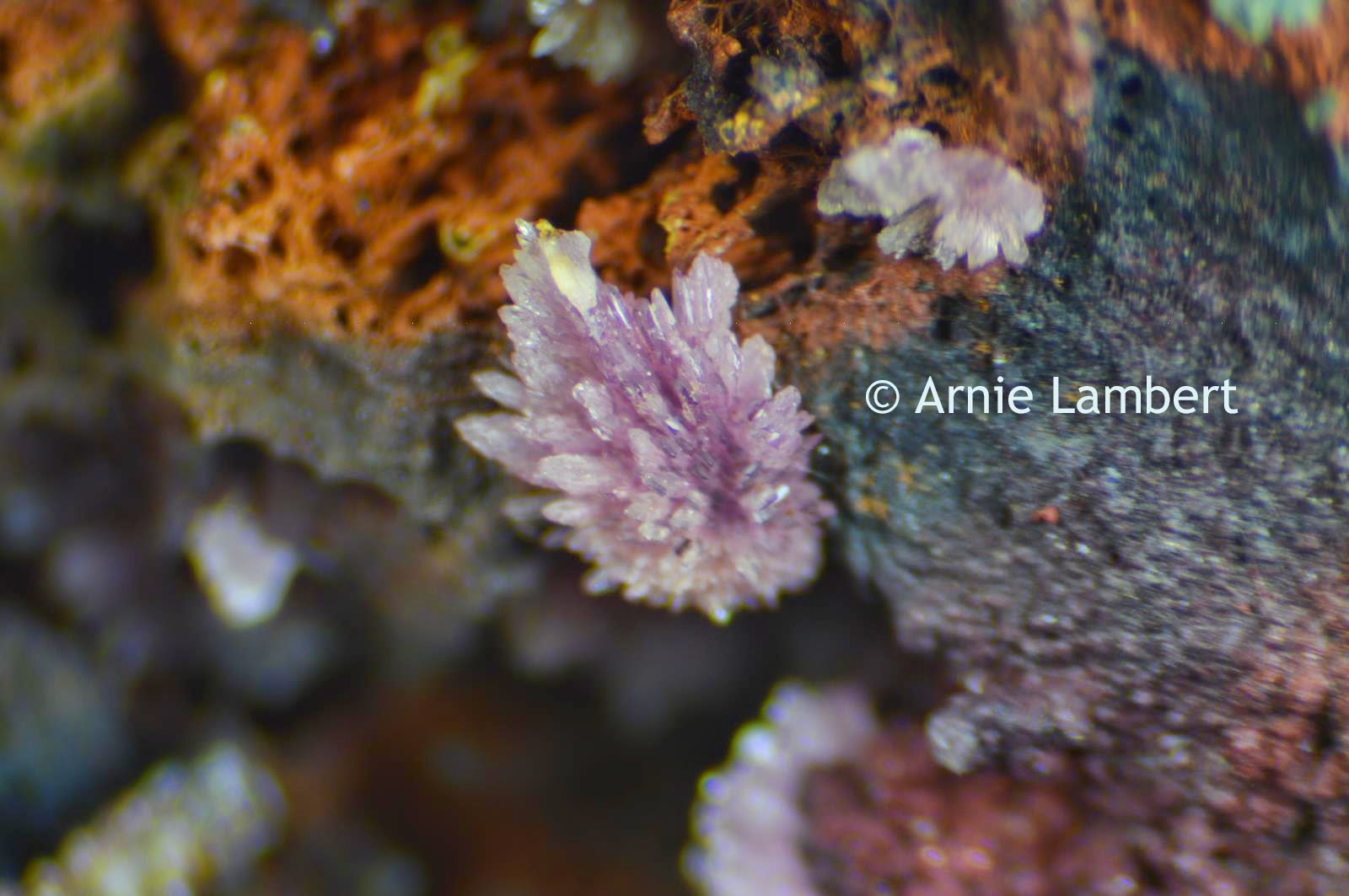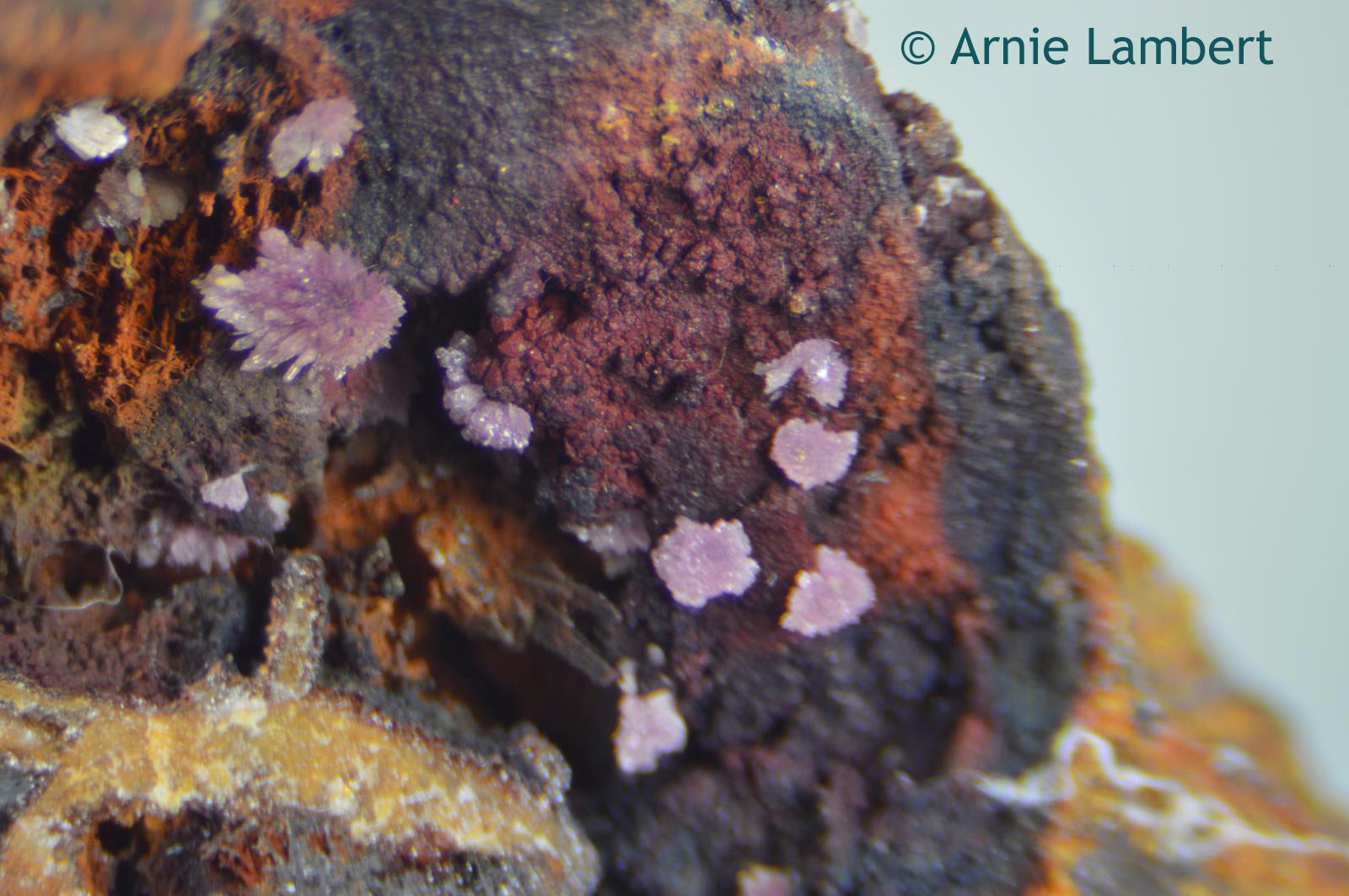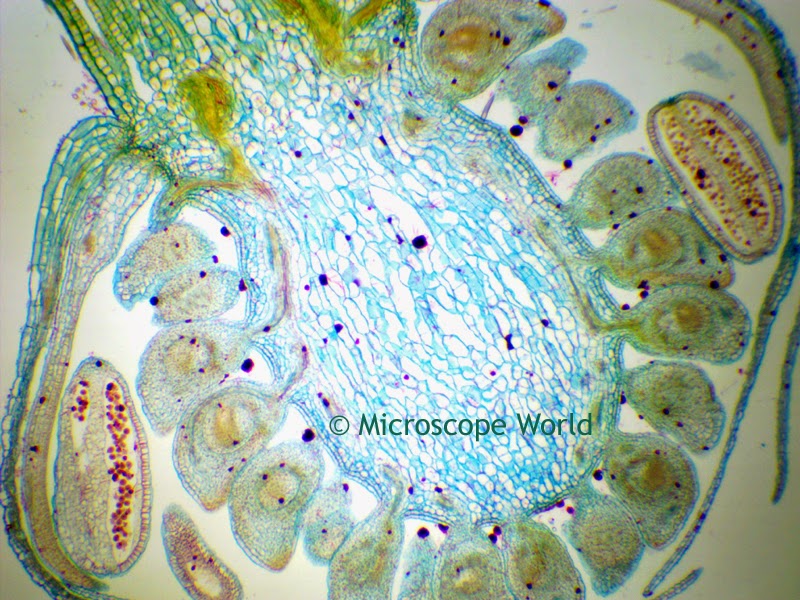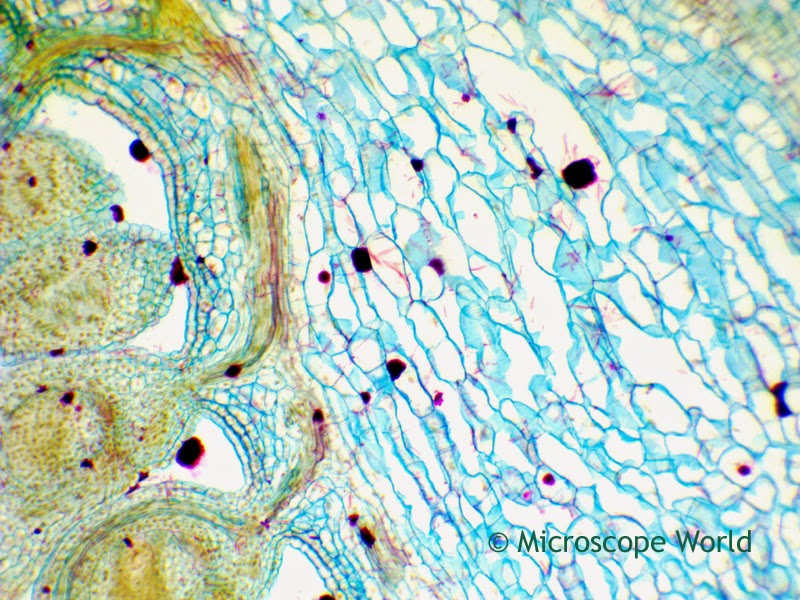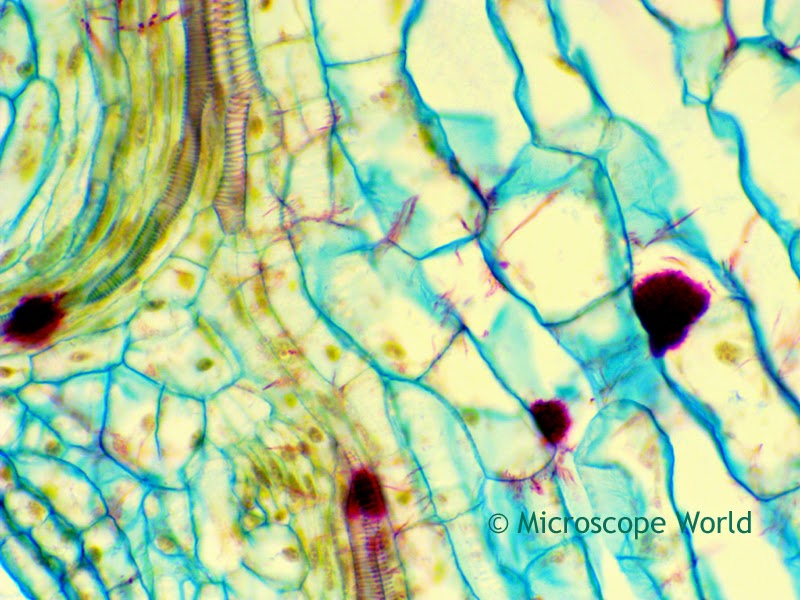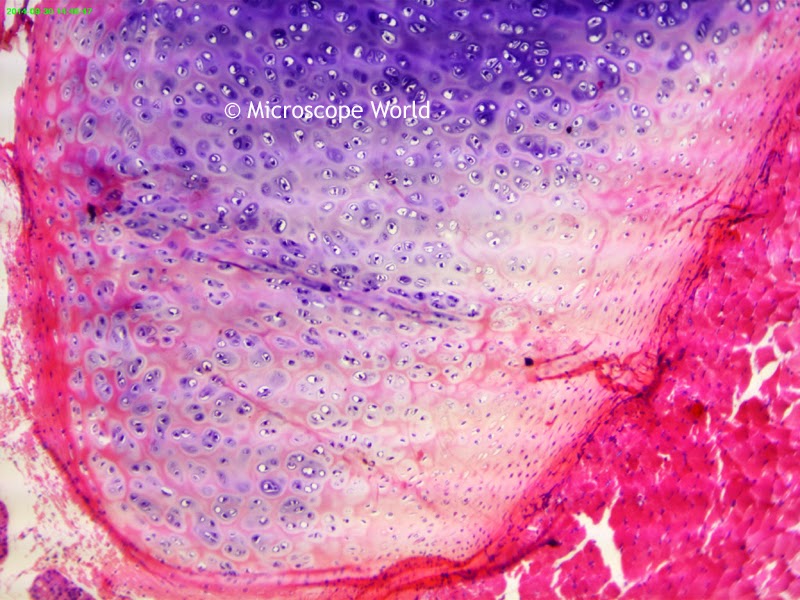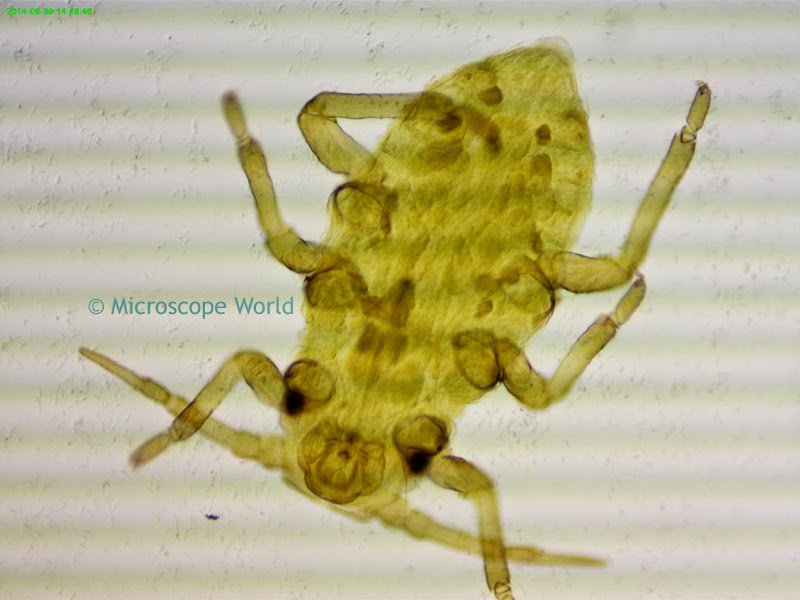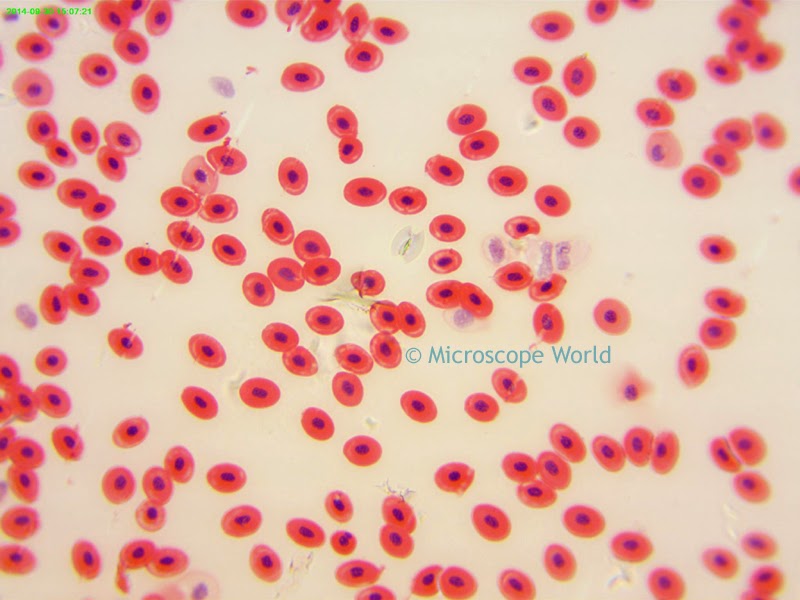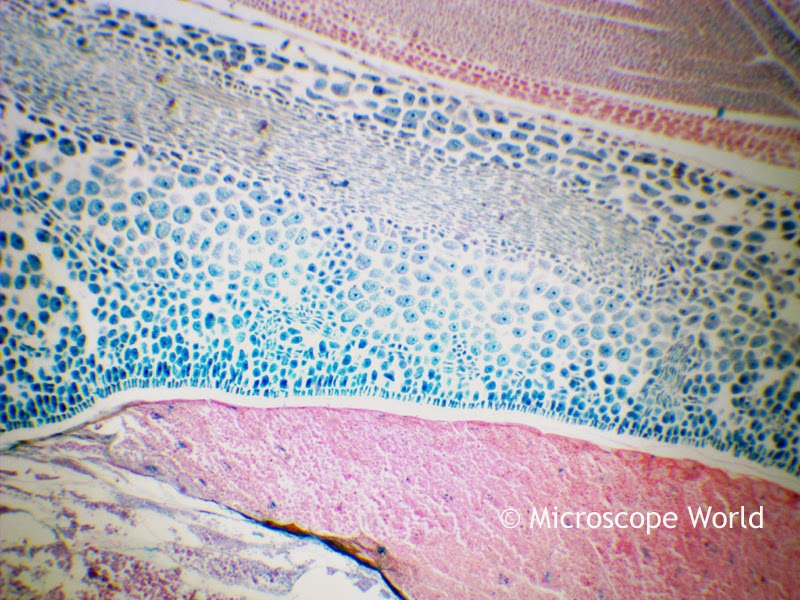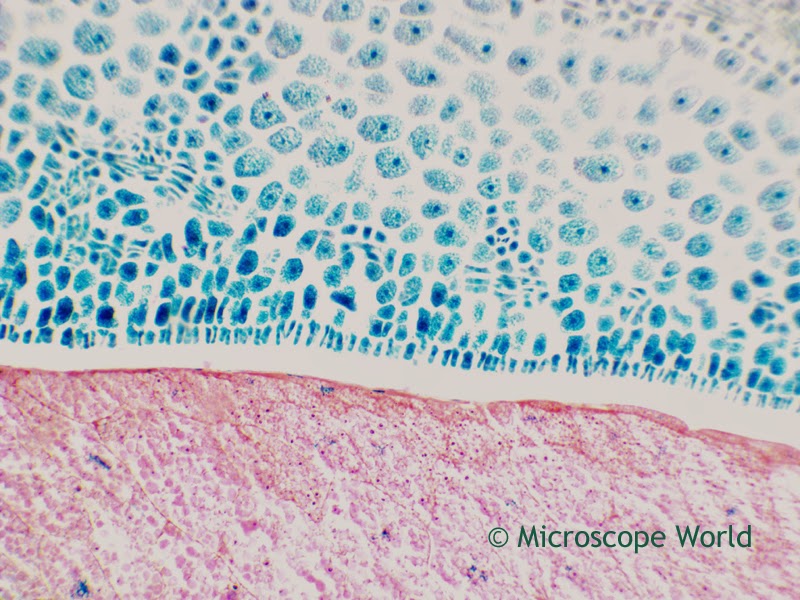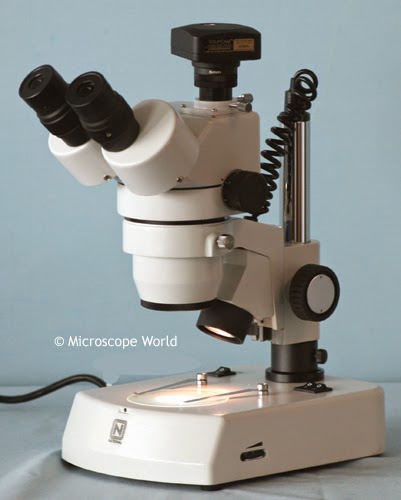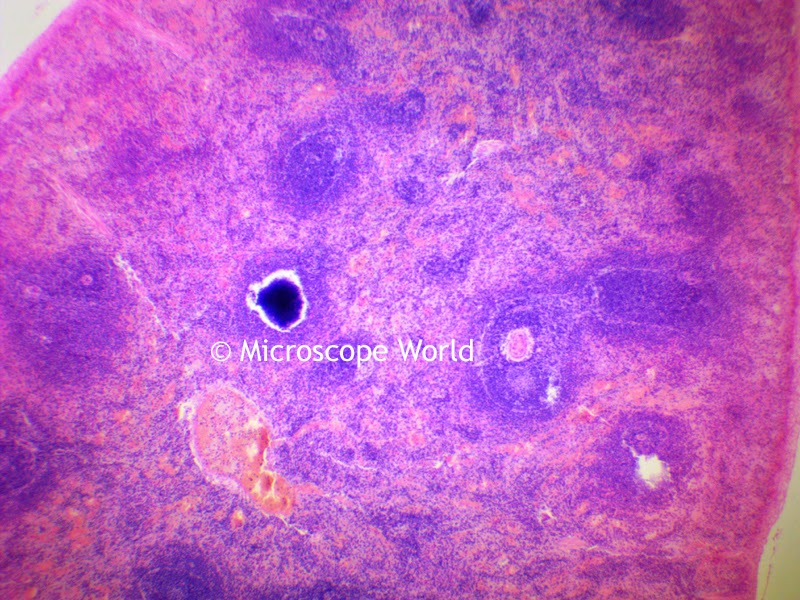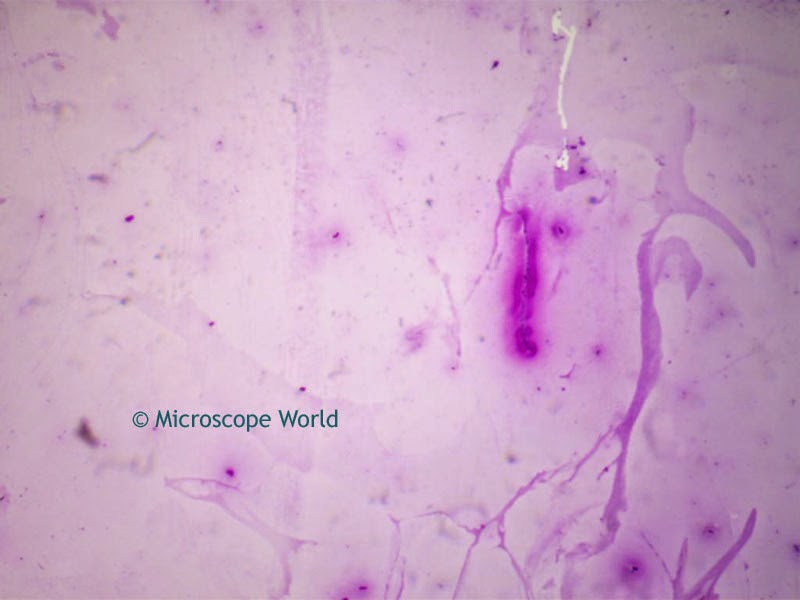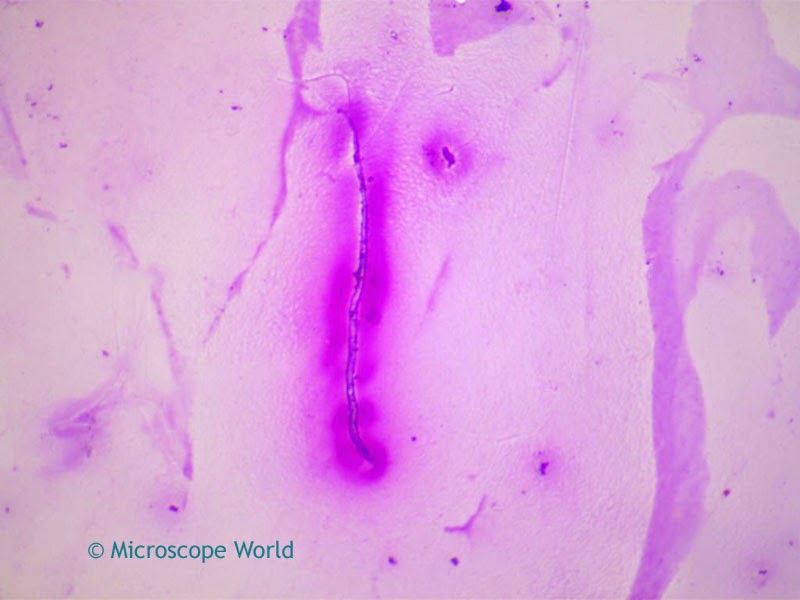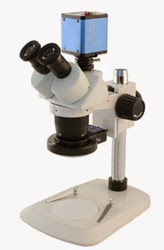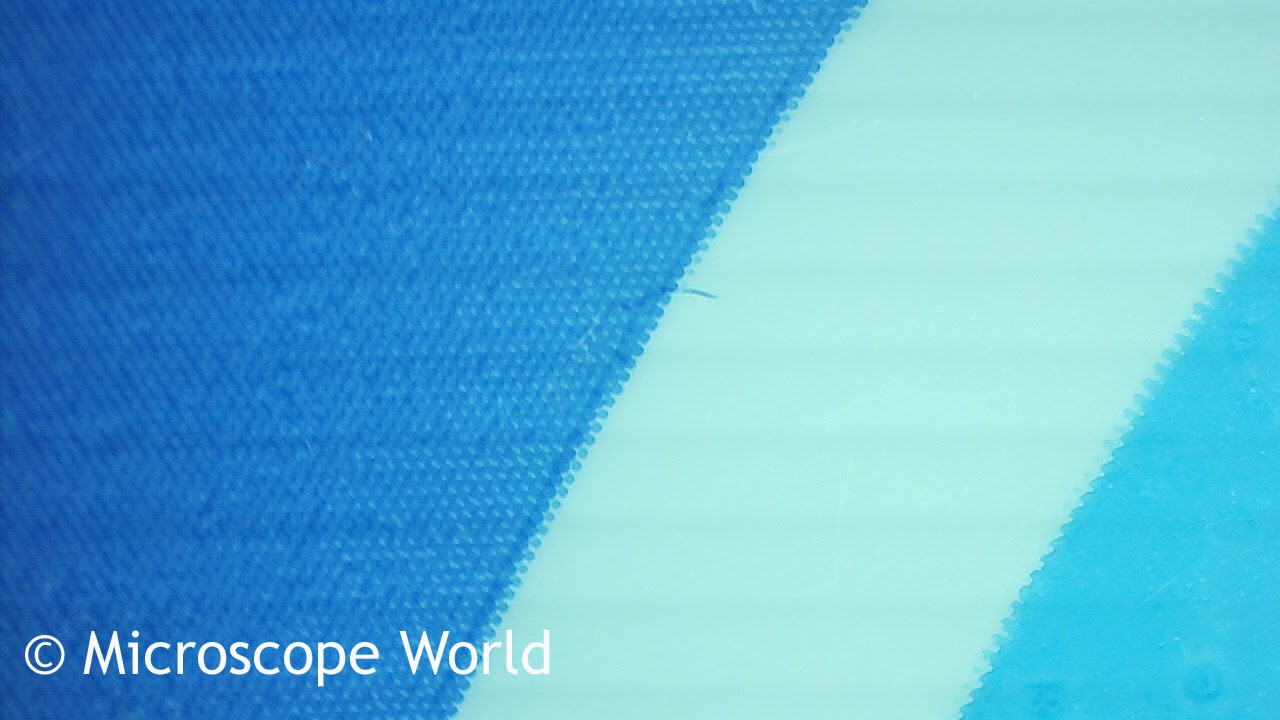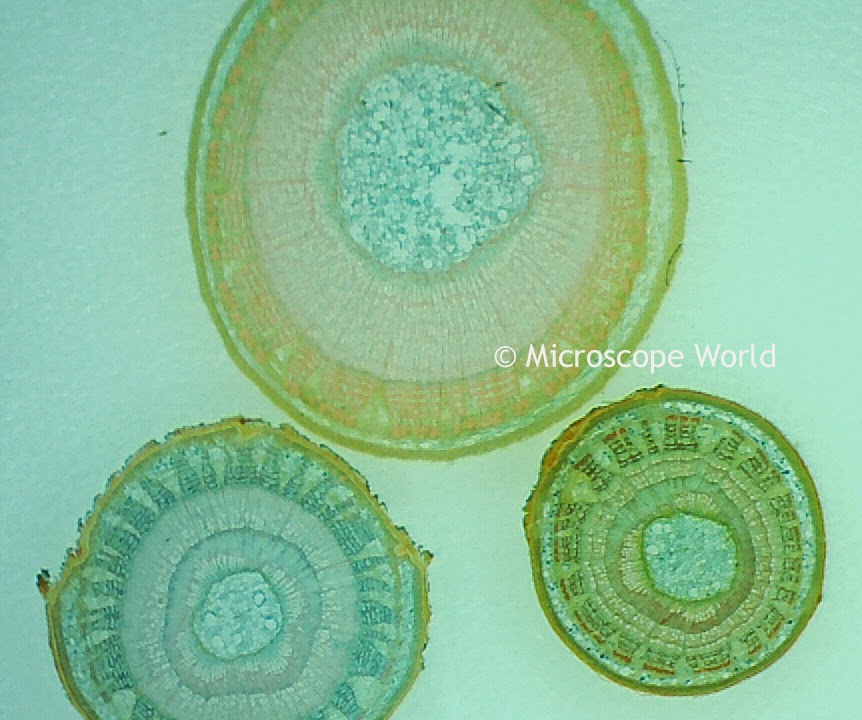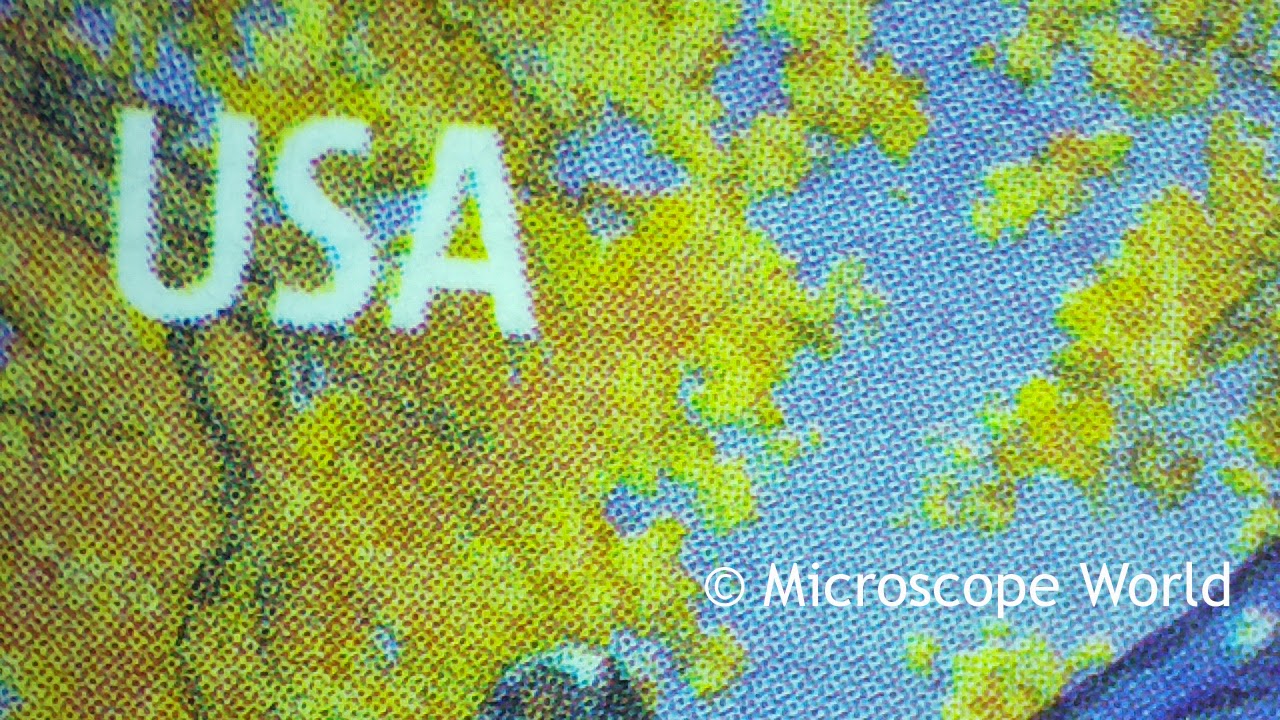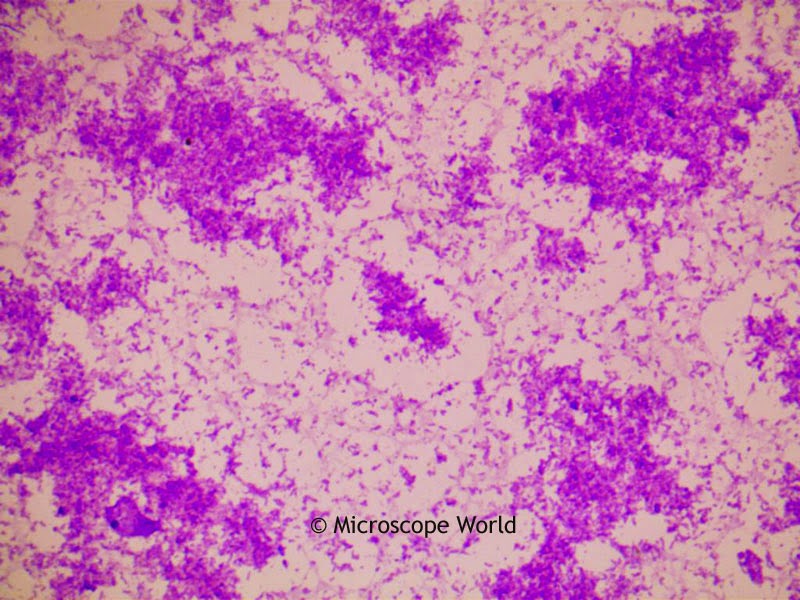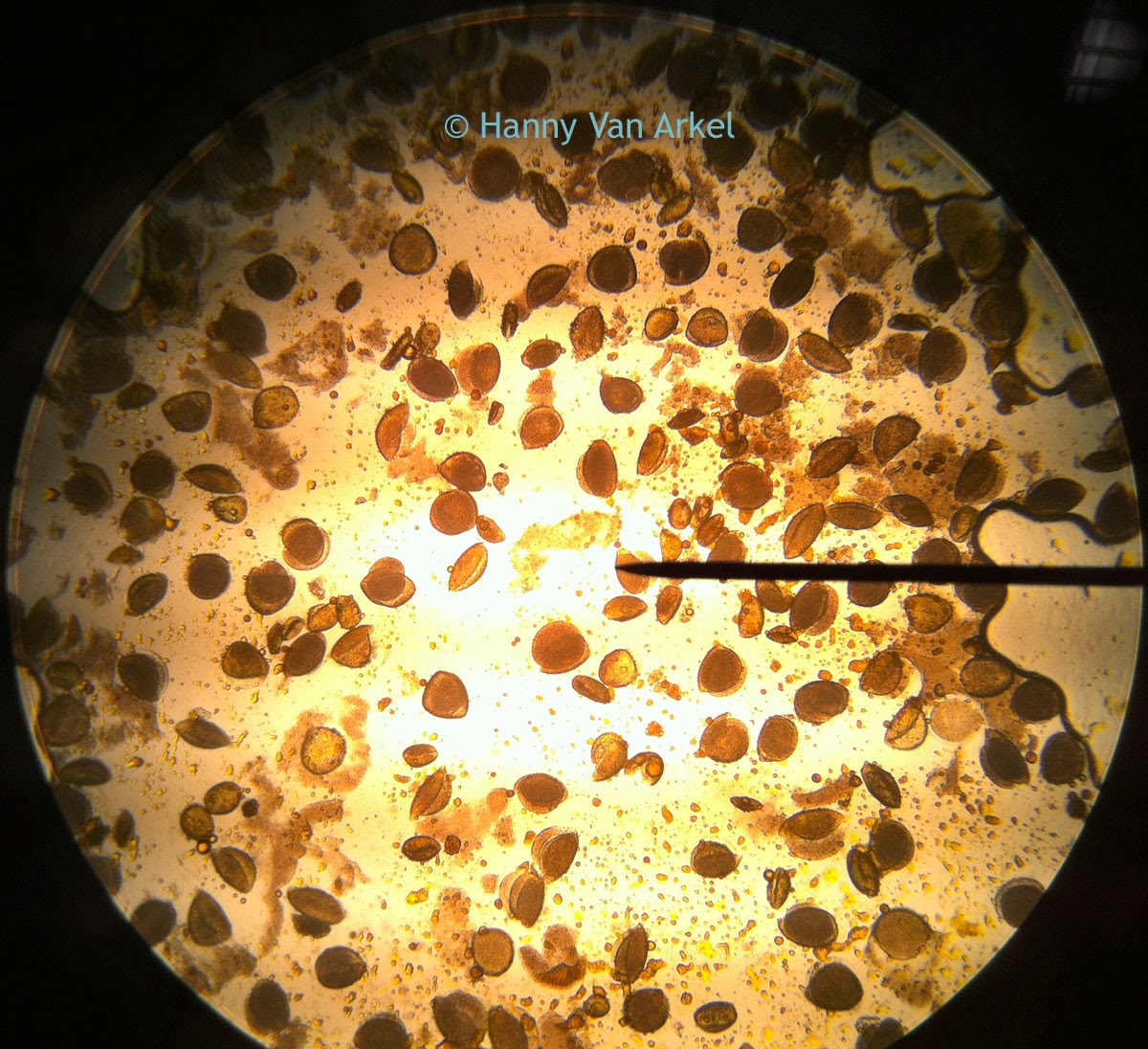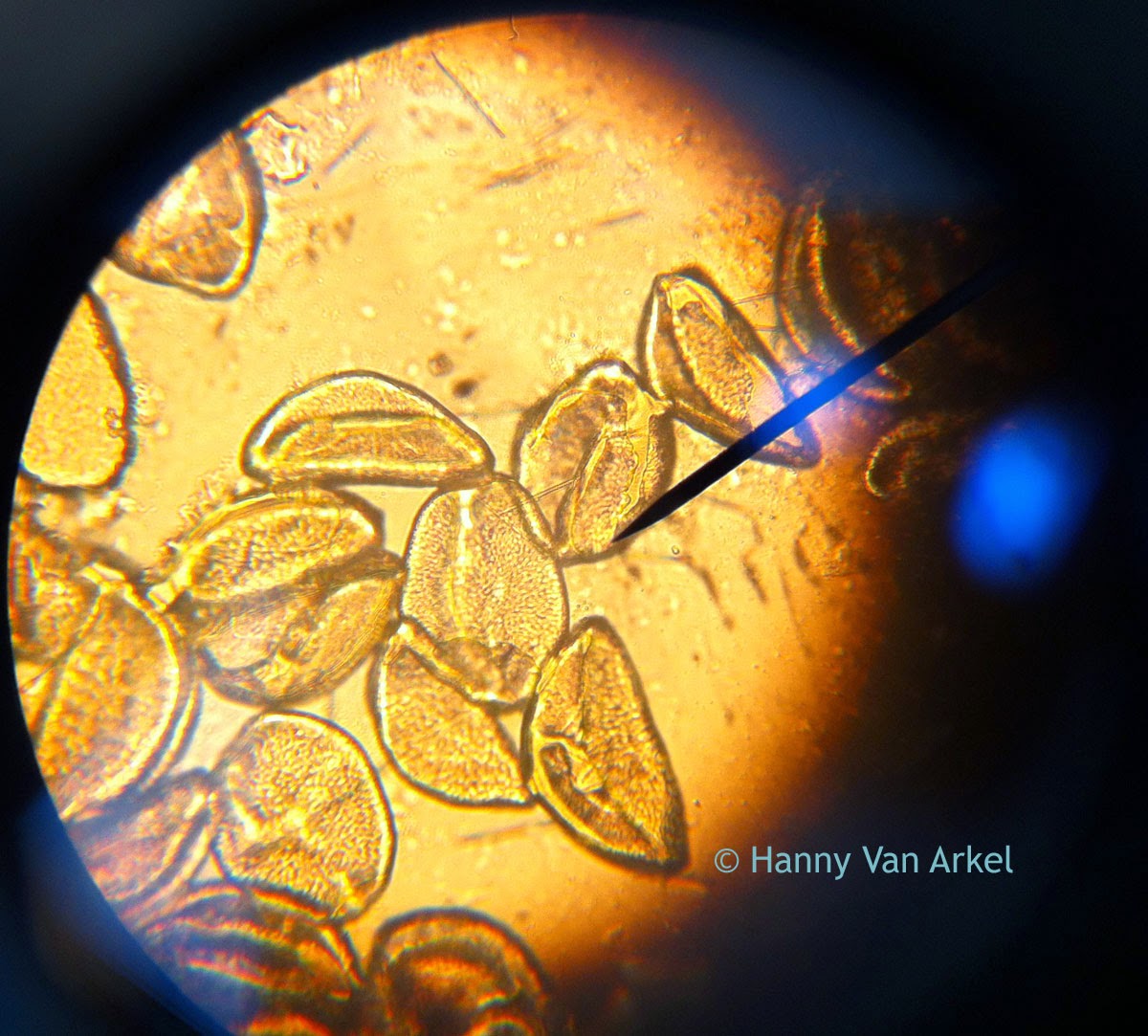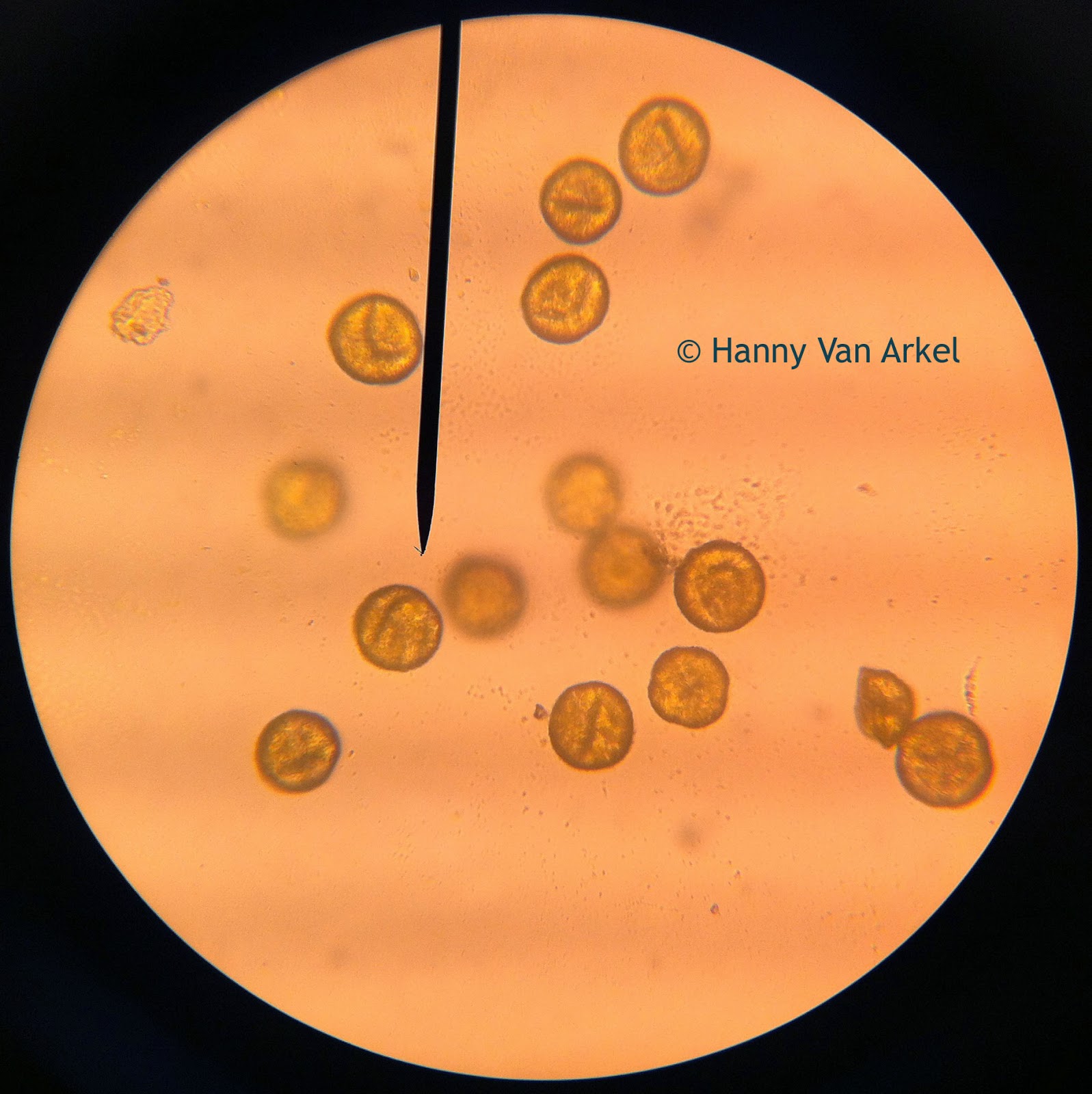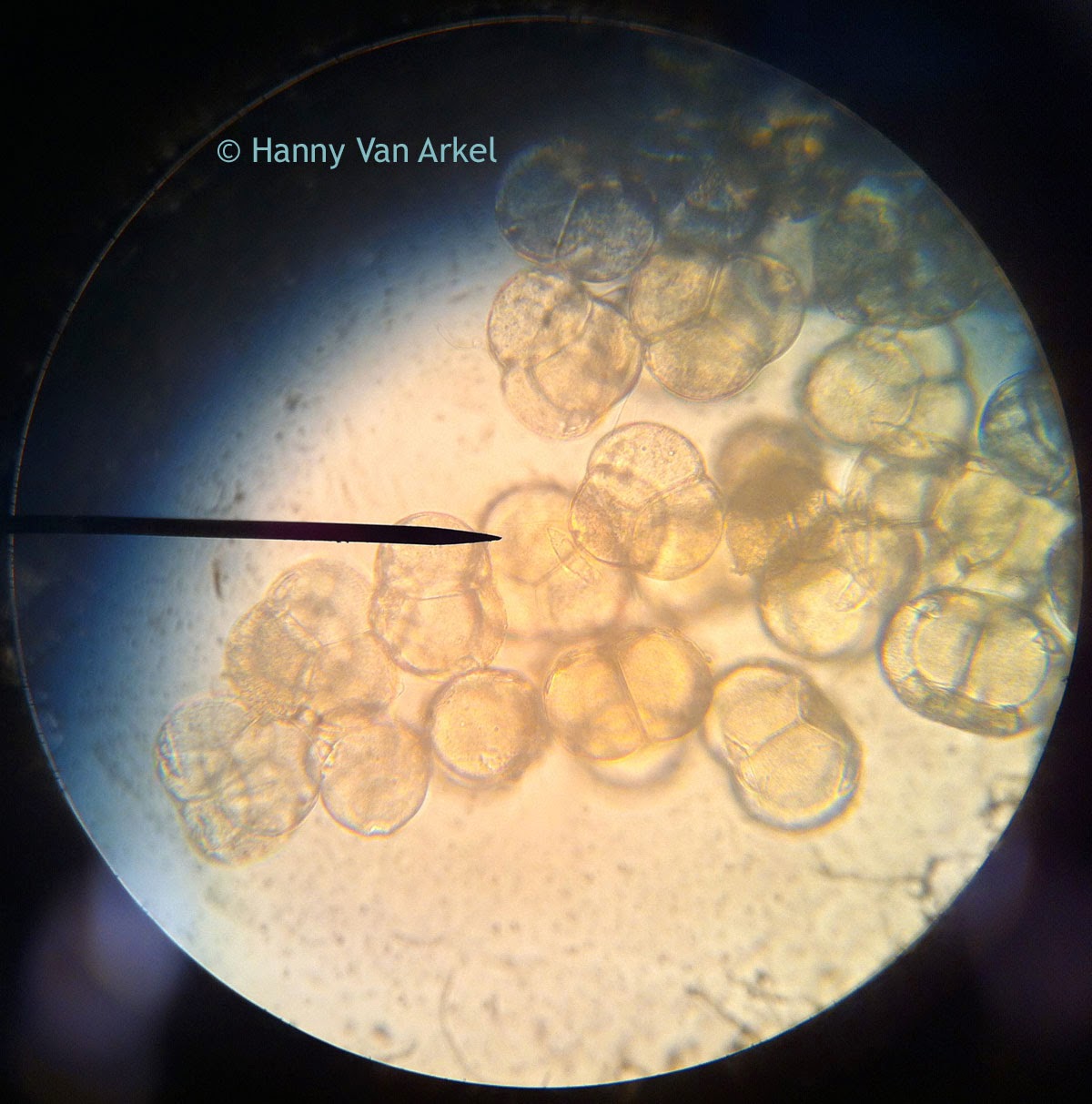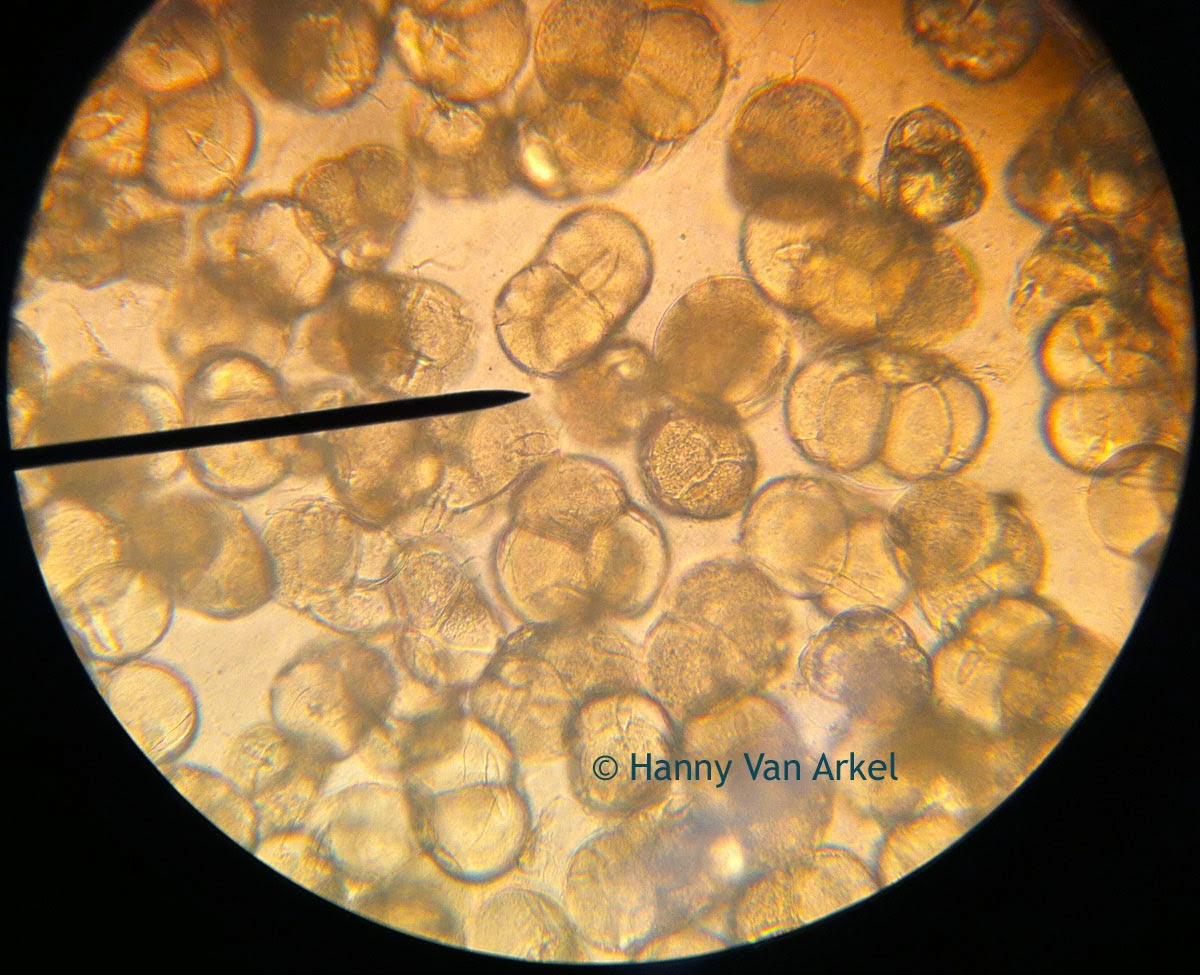Minerals are best viewed under a
stereo zoom microscope. A customer of
Microscope World's, Mr. Arnie Lambert captured these mineral images using a stereo microscope and a Nikon SLR camera. The Nikon SLR camera was connected to the microscope through the eyetube on his microscope using the
Nikon SLR camera microscope adapter.
![Garnets in Rhyolite under the microscope Garnets in Rhyolite under the microscope, from New Mexico]() |
| Garnets in Rhyolite from New Mexico. |
Garnets are a group of silicate minerals that have been used for many years as gemstones and abrasives. Garnet can be a variety of colors including red, orange, yellow, green, purple, brown, blue, pink, colorless and even black. The rarest color is blue. Rhyolite is an igneous, volcanic rock.
![Stengite under the microscope stengite under microscope from Indian Mountain]() |
| Strengite from Indian Mountain in Cherokee Co., Alabama |
Stengite is a relatively rare iron phosphate mineral that is lavender, pink, colorless, or red. This mineral was named after Johann August Streng (1830-1897), a professor of Mineralogy at the University of Giessen, Germany.
![Strengite under the microscope Strengite from Alabama under the microscope]() |
| Strengite from Indian Mountain in Cherokee Co., Alabama. |
![Strengite mineral under the microscope Strengite minerals as seen under the microscope.]() |
| Strengite from Indian Mountain in Cherokee Co., Alabama. |
Thank you Arnie for sharing your images with Microscope World!




